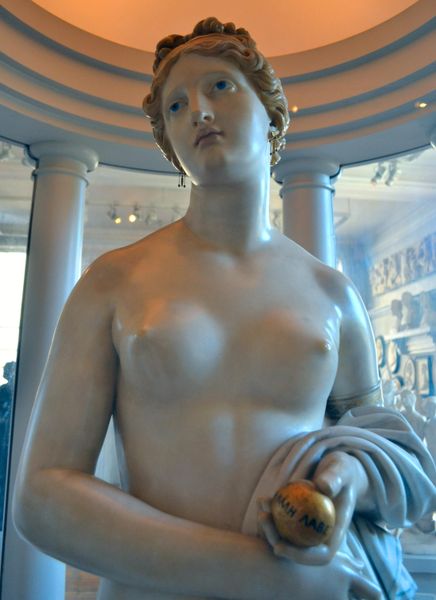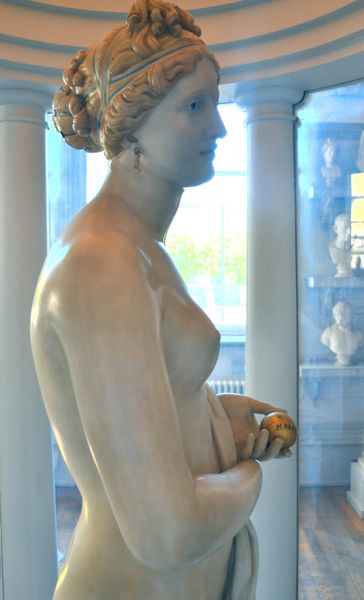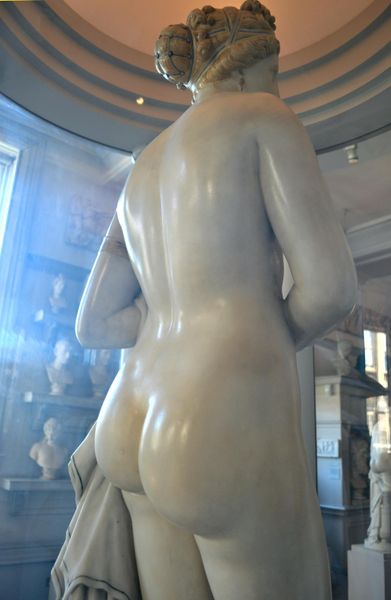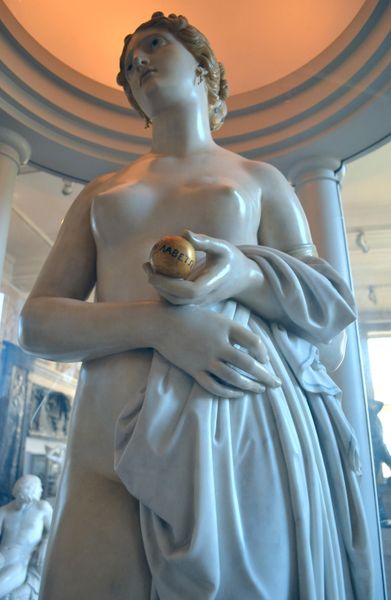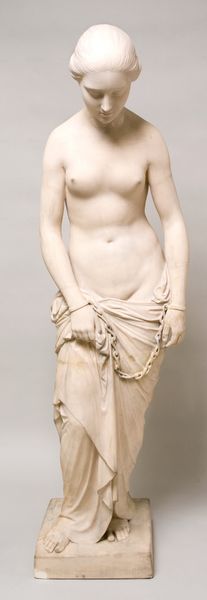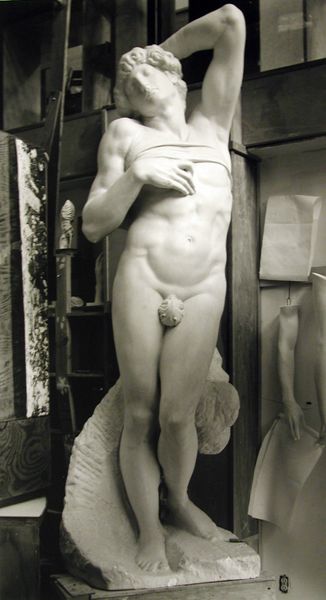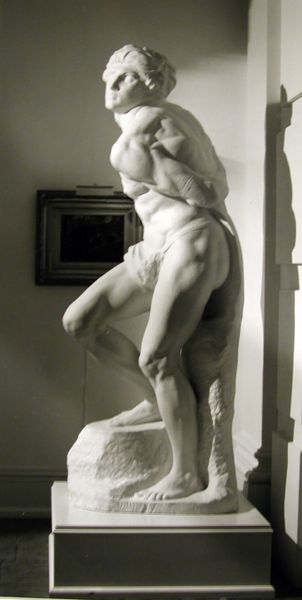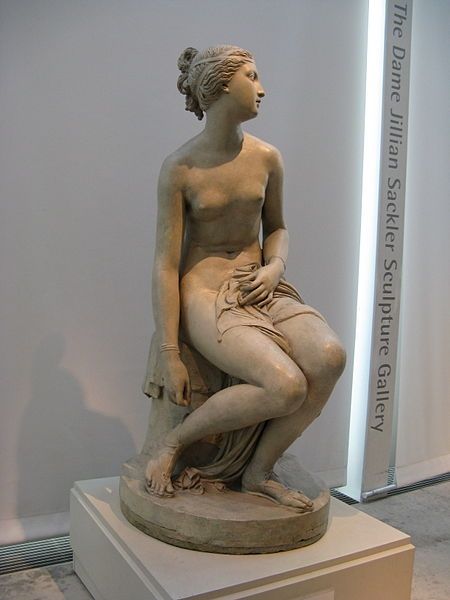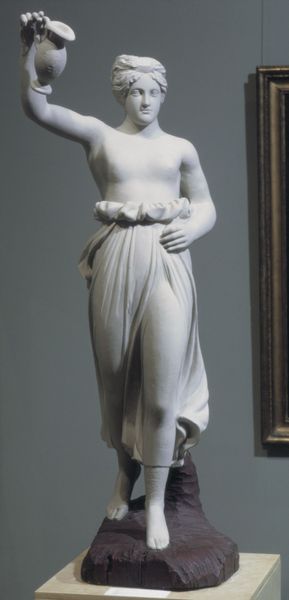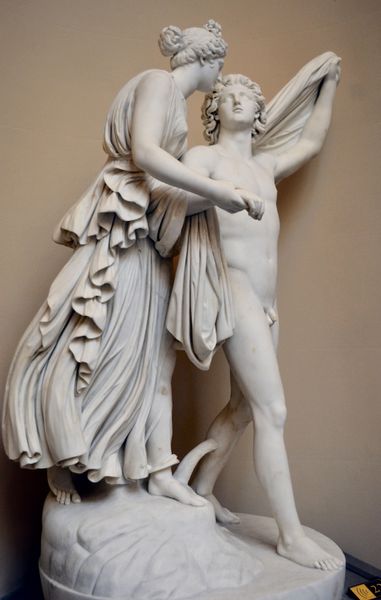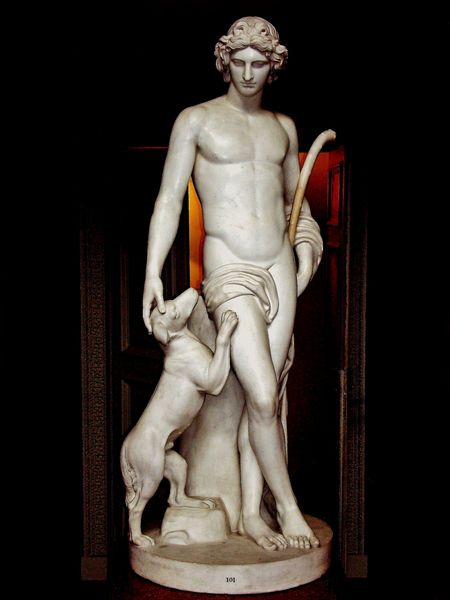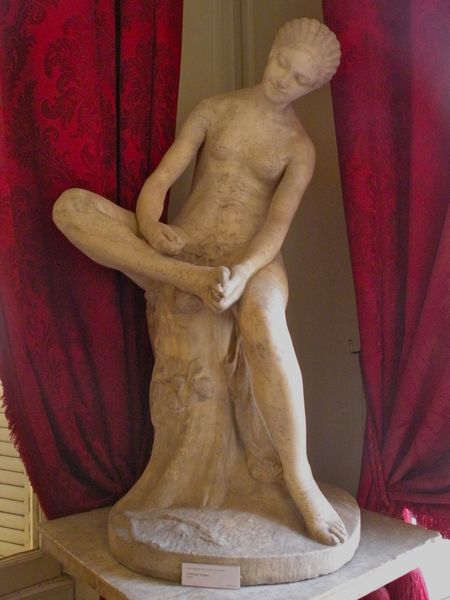
Copyright: Public domain
Curator: Oh, hello! Have you seen this detail of Gibson's "The Tinted Venus," created around 1862? The slight blush on the marble skin—it’s something else, isn't it? Editor: It's ghostly... It's as if she's materialized straight out of a dream. I'm struck by the deliberate smoothness of the marble. Does that contribute to this… well, unsettling effect? Curator: That very smoothness is a nod to the Neoclassical ideal – a pursuit of flawless beauty drawn from ancient Greek and Roman statuary. However, Gibson dared to add tint to the marble with encaustic paint, challenging that notion of pristine purity. Editor: So, the colour. A very delicate colour on her cheeks...and lips perhaps? It gives a semblance of warmth. Is there a symbolism related to this chromatic infusion into the heart of this statue? Curator: Absolutely! In those times, sculpture was normally unpainted. This statue was originally received very poorly because of Gibson’s decision to break the rules. And you can find other symbolism here – she holds the apple awarded to her by Paris, claiming her as the fairest. Remember? Editor: I see it now. That gilded apple shifts her away from the frigidity of ideal marble to this more human-feeling moment. This object is at the center of cultural memory. I find her self-possession, there's a serenity to her features and an almost detached knowing. Curator: It's rather subversive for the period, don't you think? I imagine viewers bristled at the suggestion that beauty wasn’t some bloodless abstraction. What strikes you most about this depiction of Venus, knowing a bit about its controversial creation? Editor: I think there is an honesty to this piece which reveals our complicated and intimate relationship to Beauty, what can wound and also free us. This work encourages us to investigate further, to rethink the ancient canon and it's visual legacy.
Comments
No comments
Be the first to comment and join the conversation on the ultimate creative platform.
